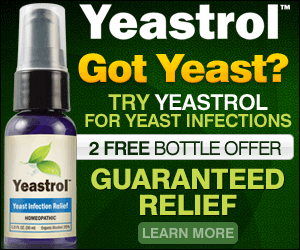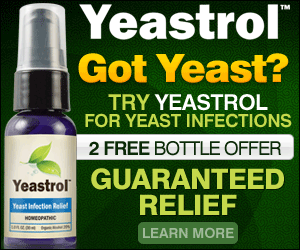Yeast infections can manifest in several different areas of your body, and can affect anyone regardless of age or gender. This form of infection is most commonly found in women and will affect the vaginal area. One of the most natural ways to fight this off is following the yeast infection diet.
There are several different reasons for the yeast infection to surface, including a poor diet, stress, unhygienic behavior or using antibiotics.
Understanding Fungus and Why It is in Your Body
Before explaining more about the yeast infection diet, let’s look at this disease in more detail. A yeast infection will occur when the level of natural fungus in your body begins to grow excessively. This yeast, which is known as Candida Albicans, is found in your body at all times; however, when it becomes excessive then you will experience problems. If the yeast production is incredibly high then the infection can be severe and painful.
Environmental disruptions have a huge effect on your body’s natural pH levels, which can cause the yeast to grow. Increased moisture, heat, elevated sugar levels, and the reduction of bacteria which controls the yeast will all affect the yeast levels within your body. Unfortunately, all of these factors will cause your body to fail to prevent the extensive growth of Candida.
When You Might Need a Yeast Infection Diet

If you suffer with a compromised immune system or an autoimmune disease, you might find it harder to fight the infection and seriously plan to start a yeast infection diet.
When you are pregnant, you might find that you suffer more with yeast infections. This is due to the high levels of hormones in your body. You might also find that if you have diabetes or HIV you suffer more.
Having your infection diagnosed correctly is essential to ensure you receive the correct medical care and eradicate the infection completely.
If the Symptoms are Extreme
Leaving the yeast infection untreated can cause major problems, and you will soon discover that you have to find a treatment. Your immune system will struggle to fight infection, and you might need medical treatment to help the problem.
Common symptoms of yeast infections include itching and discharge, although in extreme cases these yeast symptoms can include swelling and intense burning.
Regardless of the severity of the yeast infection, you need to ensure that you receive a diagnosis and treatment as soon as possible.
There are several different methods of treatment, which will help with the symptoms, but understanding the cause first of all is vital. You need to determine what is causing the yeast infection, and learn how to prevent them in the future.
Yeast Infection Diet
Yeast infections can be a huge problem for any person, regardless of your age, background or lifestyle. You do not need to come into contact with another person with the infection, and both men and women can suffer. There is a huge array of different causes, and some may surprise you, which is why people often struggle to find a cure.
What Causes Yeast Infections?
Among the most common causes of yeast infections are taking the contraceptive pill, being diabetic, personal hygiene issues, tight clothing, antibiotics and soap. Another factor that can cause yeast infections which is not well known is your diet. Eating the wrong foods can cause the yeast throughout your body to grow rapidly, and cause the infection.
If you believe that your diet may be the cause of your yeast infections, you will need to determine, which of the foods should be stopped and begin a yeast infection diet. There are many different foods, which will cause the natural microorganisms to over grow, and these should be removed from your diet. With the correct changes, and more awareness of the foods that you eat, you will see results in a short period of time.
Making the Necessary Changes to Your Diet

Overcooked foods will begin to break down, and the vital vitamins and minerals will often be lost. If possible, you should try to saute and steam vegetables, ensuring that you retain all of the essential elements. This is an important requirement of the yeast infection diet. There are some vegetables which contain natural sugar, which should be eaten in moderation, and these include potatoes, carrots and onions.
Meat is good for you in moderation. White meat and fish are the better options, and you need to monitor your portion size. Any larger than half the size of your palm and you will be asking too much of your digestive system. The moment you put a strain on your organs, your body will allow yeast to build up, and become a problem.
Condiments are Also an Issue
You may eat healthily, but let yourself down with the condiments that you choose, therefore, this need to be considered alongside your meal when planning a yeast infection diet. Sea salt is good, alongside pure virgin olive oil, which makes an ideal dressing. Fresh grated ginger is another fantastic condiment, which can help to control your yeast infections.
Maintaining a Healthy Diet
You may begin changing your diet to help with your yeast infection; however, once you begin to feel better, you will stick to the changes. If you can keep your diet healthy, your hygiene perfect, and your yeast controlled, you will find that you suffer less. Yeast infections are never nice, therefore avoiding them altogether is advised.
